A month or so ago, I bought myself a bunch of Japanese textbooks and iPhone apps, and started learning hiragana. Sort of suddenly. I now feel like a kid learning to write, once again. Last time it happened to me was in 1996-98, when I was learning to write in Arabic and Armenian. And it's making me extremely happy.
We're also watching Hayao Miyazaki's wonderful, amazing films all the time. Again, total happiness. Mixed with sadness.
And every now and then, I keep running into traces of Japanese in real life here in Moscow.
On the door of the elevator in our building, for example, someone had scribbled Neko Nyan ^_^. At first, my eyes caught the word "neko" ("cat"), one of the few Japanese words that I know, and I thought that I was, well, seeing things, but then I noticed those cat ears, so Marta and I googled it at home and learned about Chocotto Sister anime and its ending theme, the Neko-Nyan Dance:
Today, a Facebook friend shared a video about this charmingly silly device, Nekomimi (Cat Ears):
Also today, as we were crossing the bridge over the Moscow River at Vorobyovy Gory, I saw this text written on the railing - and now I'm so curious about its meaning. Someone, please help!!! (And, in case it says something nasty and inappropriate, I do apologize to those who know
#1
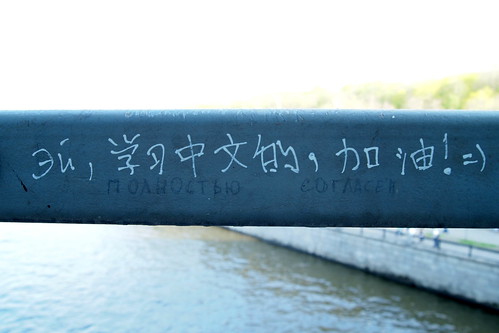
(A comment in Russian by someone who's most likely as clueless as I am: "Completely agree.")
#2
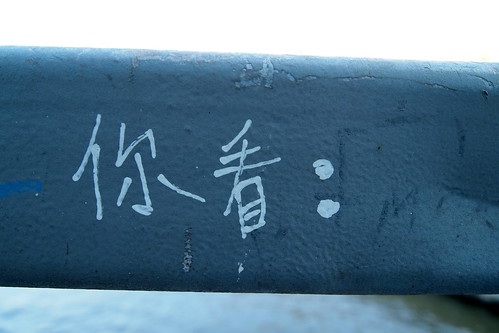
#3
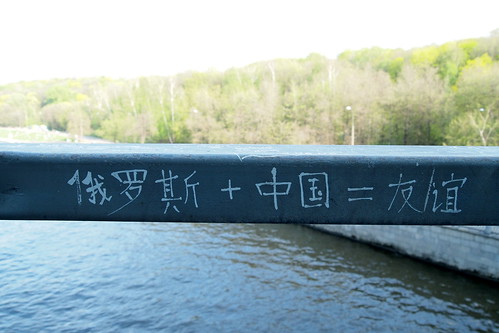
#4
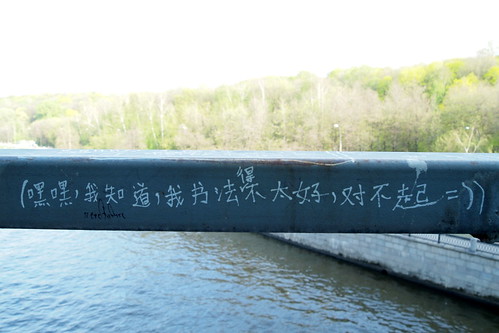
#5.1
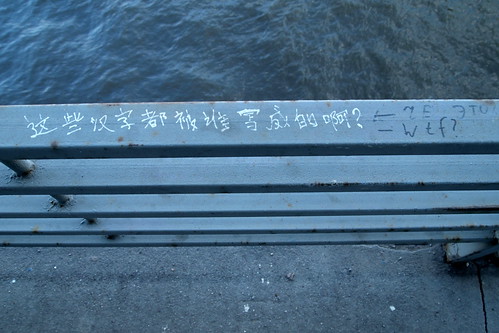
("What is it?" - in Russian, in addition to "WTF?")
#5.2
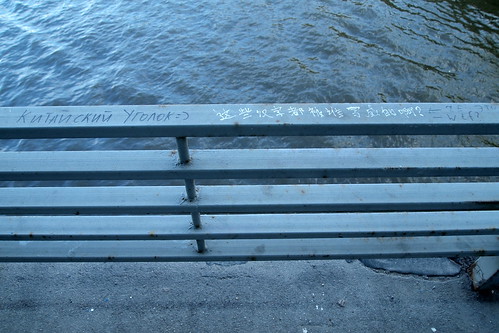
(And they also think it's in Chinese: "A Chinese Corner.")
(Ha, and suddenly I'm having doubts as well - what if it is, indeed, Chinese, not Japanese??? Ouch.)
#6
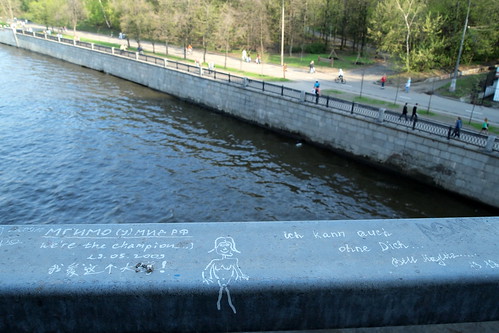
("We're the champions..." - from MGIMO students; something in Japanese; and a German quote from Bill Kaulitz/Tokio Hotel fans.)
There was much more on that railing, including "I love you" in the Tatar language, but since I'm interested in Japanese now, I only took pictures of the stuff above.
Again, I'd love to know the translation! (I hope it's something as innocent and silly as those cat ears, and not some evil curses.)
:)
HI Veronica - this is chinese not japanese, though a bit confusing because Kanji script of Japanese was taken from the Chinese script. One non-scientific way to tell the two apart is that Chinese uses only this script, while Japanese can use all three scripts (Kanji, hiragana, katakana) in the one sentence. In Japanese, verbs end in hiragana (there is no Kanji for verb endings); similarly particles (e.g. on, at, in, am etc) are all in hirgana. Many sentences will end with the hirganan 'desu', 'masu', or even 'yo' (which is like an exclamation mark) or 'ne' (which means isn't it, or I agree).
ReplyDeleteSo a sentence with no verb endings or particles doesn't exist in Japanese...
Also, in photo # 3, the two characters after the plus sign is how you write 'China' in Chinese. (It's also how you write it in Japanese, pron: Chuugoku). The literal meaning of the characters is 'through' or 'middle' and 'country'. Guessing that a Japanese person wouldn't write about China?
Hope this helps! Kanji is fascinating but very confusing - each symbol has numerous different meanings and pronounciations, plus a literal meaning too. But it's worthwhile to learn - as I said, it's just really interesting.
The only two languages I've ever spent much time learning were Russian and Japanese - two very difficult languages, but I found them both so interesting.
Thank you so much for this explanation! And I'm sorry about my mistake! Will update the post now!
ReplyDelete